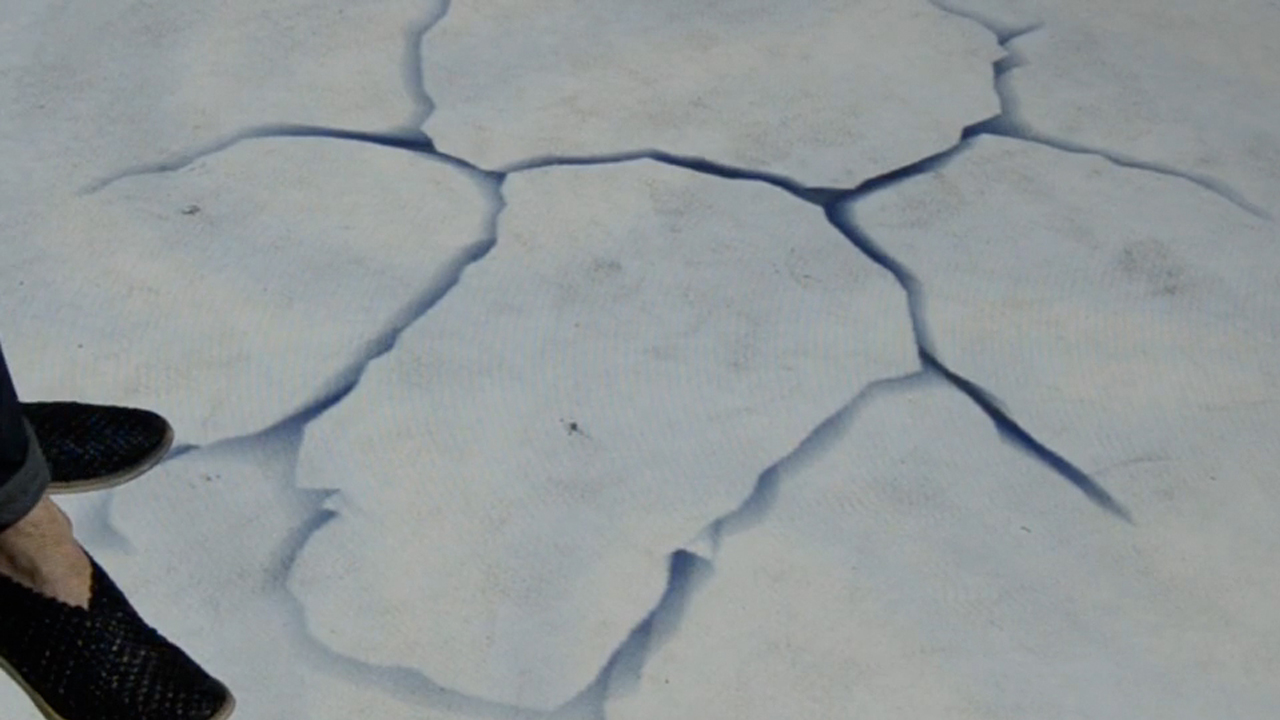
.break the ice.
break the ice demands our action, in a deep dive into ourselves to find out who we really are and what surrounds us
What do we show to our friends or foes in a world where we are always connected and our steps constantly captured and archived? Our inner self or our outer self? Does someone really know what we think? Despite constant contact through digital connections and social media, most people have nobody to confide in. What, after all, do people communicate among themselves? How fragile, stable, short or long lived are the connections we built?
INTERACTIVE INSTALLATION
2014
People are detected over a circular rug in real-time by a kinect sensor. The ice cracks depending on the positions of the users and time, which they spent there.
Their movements can either make the ice recede, making a video visible underneath, or make the ice form. The sound corresponding to the graphics is also generated in real-time using overtone/supercollider, involving the cracks, running water and ice formation.
Three synthesizers were created, marking the three moments of the interaction. The animation uses a 3D model, implemented in processing in combination with shaders in OpenGl Shading Language.
Exhibitions
- ART + SCIENCE:
- 7 to 27 April 2016. Belgrade. Serbia
- ARS ELECTRONICA 2015:
- 3 to 7 September 2015. Linz. Austria
- YICCA 2014:
- 20 November to 11 December 2014. Lugano. Switzerland
- ART/INTERACT:
- 27 to 30 November 2014. Porto. Portugal
Prizes
- Winner’s selection of YICCA 2014, International Contest of Contemporary Art
Media
@ ARS ELECTRONICA 2015
Interface Cultures Post-Post Exhibition


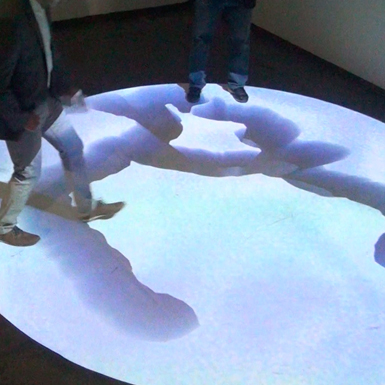
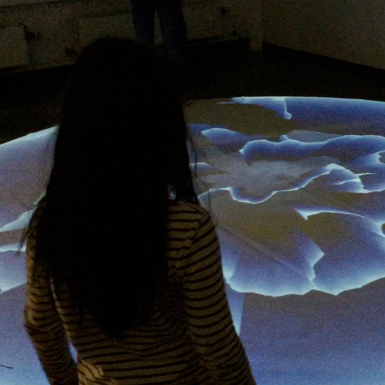
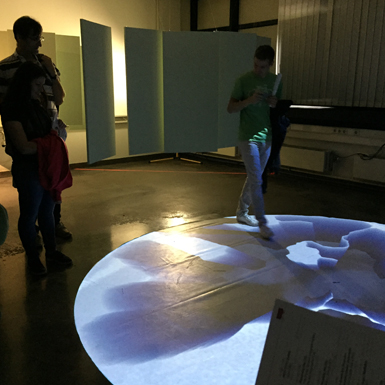
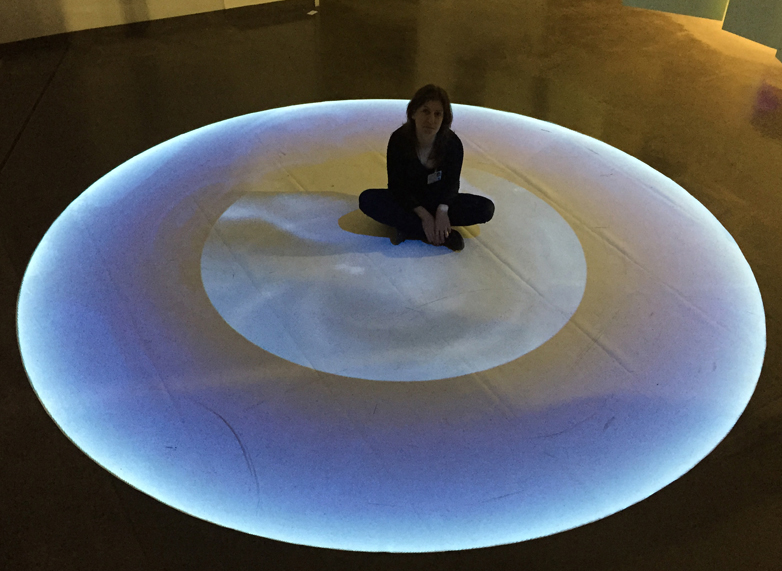
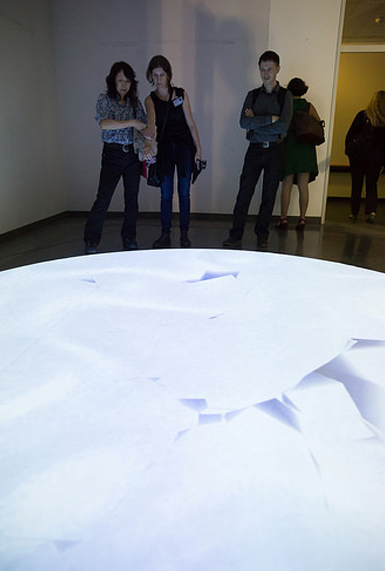
*This multi-user interactive installation needs floor space for a circular 3-4 diameter projection area with ample space for several people to move around. The place should be suitable for projections, dimly lit, and with no direct sunlight or other sources of infrared light, preferably indoors. It should have a high ceiling for a projector to be placed vertically pointing towards the floor, enough for a 3-4 height projection size. On the floor a circular white smooth “rug” projection screen is placed.
Hardware
computer, projector, kinect sensor, 2 speakers, 1 circular screen rug
Software
Processing, GLSL Shaders, Overtone/Supercollider
Thanks
Christa Sommerer, Laurent Mignonneau, Martin Kaltenbrunner, Alexandre Cristóvam, Alexandra Quintas de Barros & all coleagues and members of Interface Cultures Department and engageLab